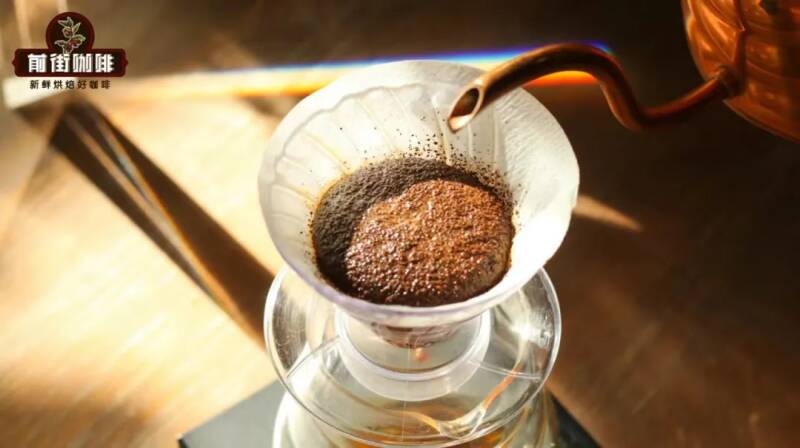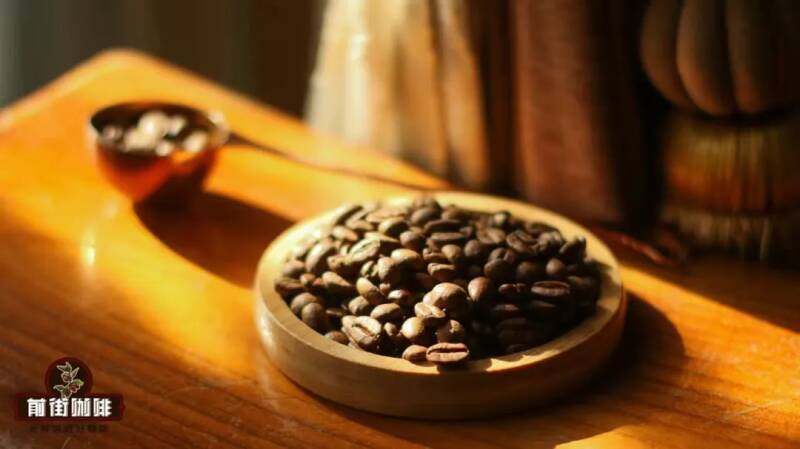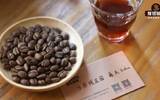The traditional Japanese brewing method is "Matsuya Style"! Does pine room hand-brewed coffee have to pass? Three genres of Japanese hand-brewed coffee
Although there are many ways of cooking, nothing impresses Qianjie most than the classic "pine house style" in Japanese cooking. Because the production process of pine house cooking can basically be described by the word "extreme". This "extreme" can be reflected not only in the parameters, but also in the cooking action. In terms of parameters, we can see these "extremes": the extraction water temperature is as high as 100 °C, the steaming time is as long as 180 seconds (three minutes), and the powder-to-liquid ratio is as high as 1V5; in terms of cooking, we can see these "extremes": the use of lids for real steaming, ultra-high water injection height, and the addition of too much bypass water.
Although it is extreme everywhere, the coffee brewed in this way has a unique delicacy, and it is rumored that it has even become a "national" way of brewing in Japan. So it makes people wonder why such an extreme way can still make good coffee? As the saying goes: every cause must have a result! So today Qianjie will take you to make an in-depth analysis of why pine house cooking is so "extreme".
What is pine house cooking? It has been more than 60 years since Matsushita developed such a brewing method in 1962 in order to pursue a stable coffee production. At that time, because measuring equipment (thermometers, electronic scales, etc.) was not yet popular, it was difficult for people at that time to be as free as we are today to control the extraction parameters used for each cooking.
Therefore, people need to find another way to find other ways to replace metrology to assist extraction. Matsuya brewing is precisely because of this condition, people can use the same parameters to make coffee stably, so it once became a more systematic way of brewing in Japan at that time. This is the reason why boiling water is used for boiling, because only in this way can the temperature of hot water be accurately controlled without a thermometer. and this also led to the birth of the extremely ornamental "high position water injection" operation of pine house cooking!
Although the newly boiled hot water is very hot and has a very high extraction efficiency, as long as we inject it from an ultra-high position, the hot water will lose a lot of heat due to the increase in the surface area of contact with the air. In general, pine house brewing will control the water injection height to about 30 cm from the powder bed, which can reduce the water temperature of 100 °C to around 95 °C when in contact with coffee powder. The second is the ultra-long steaming time! It is well known that coffee beans accumulate a lot of carbon dioxide after they are roasted. This carbon dioxide will hinder the extraction of hot water, so we need to remove it by steaming.

However, due to the continuous discharge of carbon dioxide, there is a certain difference in the content of carbon dioxide between freshly roasted coffee beans and those roasted a week or a month later. the existence of this difference will lead to differences in the taste of coffee due to differences in extraction efficiency. Therefore, in order to solve the impact of carbon dioxide, Matsushita thought: since it is caused by the difference in the content of carbon dioxide, then we might as well discharge it all. can't all coffee be extracted in the same way?

Therefore, around the concept of "stability", Panasonic has extended the steaming time to three minutes, so that beans that have just been baked and beans that have been baked for a week or a month can be extracted without the hindrance of carbon dioxide. narrow the extraction difference caused by the presence of carbon dioxide. Interestingly, before and after steaming, Matsushita also made two special "small moves". One is to flatten the center thickness of the powder bed to four sides with a spoon before steaming and injecting water. The reason for this action is that pine house cooking uses a tapered filter made of wire, which allows coffee powder to accumulate in the center. When there is too much powder, the coffee powder accumulated at the bottom of the center may be too thick to touch the hot water and cannot be fully vented! So poking away the powder bed in the center can make the hot water wetter more evenly when steaming.
The second thing is to close the lid! Do many friends think this is dustproof? That must not be it! The purpose of the lid is to ensure that the aroma substances are not lost in large quantities during steaming, that's all.
But then again, even if the water temperature drops, 95 °C is still on the high side, and it is easy to extract the bitter "over-extractive smell". Therefore, we need to reduce the extraction efficiency by other means, so that the overall extraction efficiency can be reduced and return to equilibrium. And the degree of grinding is the best means of control. Therefore, in pine-house brewing, the grinding of coffee beans will be thicker than the conventional way of brewing. In addition to avoiding high water temperature, rough grinding has another advantage, that is, basically there is no stagnant water, simply speaking, it can be really scoured and extracted, and the coffee will not appear bitter and mixed taste because it has been soaked for too long. (grinding for conventional cooking on the left and grinding for pine house cooking on the right)
The last feature is that the coffee liquid is very little, only about 5 times the weight of beans (for example, only extract 150ml coffee liquid with 30g powder)! Because Mr. Matsushita believes that the essence of coffee is mainly concentrated in the first half, and the bitter substance in the second half is too easy to release, so we only need to flush out five times the liquid weight of the coffee. Until finally, we use bypass method to dilute the coffee concentration to the appropriate range.
This series of operations not only reduces the differences caused by different baking dates, but also allows coffee to avoid the occurrence of over-extraction. The most important thing is that the coffee will have excellent flavor performance, and the concentration can be adjusted freely! Therefore, Qianjie thought that pine house cooking left the most deep impression! So finally, Qianjie, let's introduce the operation flow of pine house cooking.
Pine house brewing we need to collect all the utensils needed for pine room brewing. There are: metal filter frame, hand punch pot (fine mouth is the best), deep-roasted coffee beans (the coffee beans used here in the front street are Indonesian gold manning), filter paper (it is recommended to pick a hard one), small pot lid.
The parameters are as follows: powder amount: 30g, powder-liquid ratio: 1:5, grinding: 40% 45% pass rate of No. 20 sieve, water temperature: 100C. So let's take a look at how pine house cooking works.
①: put the filter paper on the filter rack, then pour the coffee powder into it. ②: then use a spoon to push the coffee powder accumulated in the center around, ready to brew. ③: raise the water injection height to the height of 30 cm according to the powder bed, then circle outward from the center until the coffee powder is all wet, then close the lid and wait for three minutes of steaming. ④: when the time is up, we inject hot water at the same height, and when the liquid weight reaches the target liquid weight, we can remove the filter frame and end the extraction.
⑤: finally, we use by pass to dilute this high concentration of coffee to an acceptable concentration. Generally speaking, Qianjie will be diluted with 1:1 water. After shaking evenly, we can start to enjoy.
-END-
Important Notice :
前街咖啡 FrontStreet Coffee has moved to new addredd:
FrontStreet Coffee Address: 315,Donghua East Road,GuangZhou
Tel:020 38364473
- Prev

What is the difference between specialty coffee and hand-brewed coffee? What does special coffee mean? Does special flavor belong to coffee?
As far as current coffee shops are concerned, the coffee products sold are mainly divided into three categories! One is a very classic espresso, one is a single-piece coffee that interprets the concept of fine products, and the other is a specialty coffee that is mainly creative! As we all know, the store on Qianjie only sells the first two, so many customers passing by come to the store to inquire.
- Next

Black sesame + tofu flower! Starbucks 'new lattes are like "ashtray"?!
▲ Click to pay attention| Daily Boutique Coffee Culture Magazine Coffee Workshop enters October, which is one step closer to Halloween at the end of the month. Many chain brands have begun to launch new festival-limited products. Starbucks, which has a wide range of stores around the world, is no exception. It has begun to launch Halloween limited drinks in various regions that suit local tastes.
Related
- What effect does Italian American coffee with filter paper have? Will coffee taste better if it is put on filter paper at the bottom of the powder bowl?
- What is the color difference in coffee beans? What are the characteristics of honey processed coffee beans? Why are the anaerobically treated coffee beans uneven in color?
- How does novice Xiaobai quickly get started and make coffee? Newbies learn to make coffee by hand and share the specific steps and process process!
- Costa tea has a shelf life of 100 years?! Expert: Unable to verify
- It's a huge uproar! American milk addition was rejected by Manner employees?!
- Mocha pot coffee bean recommendations| How fine and how much powder should be used for grinding? What parameter ratios do I need to use to make milk with Mocha pot coffee?
- What are the characteristics of the world's top ten coffee beans treated with Costa Rica honey? How to make black honey kadura from Tarazhu Pilon Processing Plant taste good?
- How to make deep-roasted coffee? What grinding water temperature does authentic Jamaica Blue Mountain No. 1 coffee use to brew it well?
- Selected high-grade rose summer coffee flavor tasting guide Why Panama rose summer has the aroma of flowers and fruits
- What equipment does a novice Xiaobai need to buy to learn to make coffee? Filter cup electronic scale bean grinder manual flushing pot purchase guide

